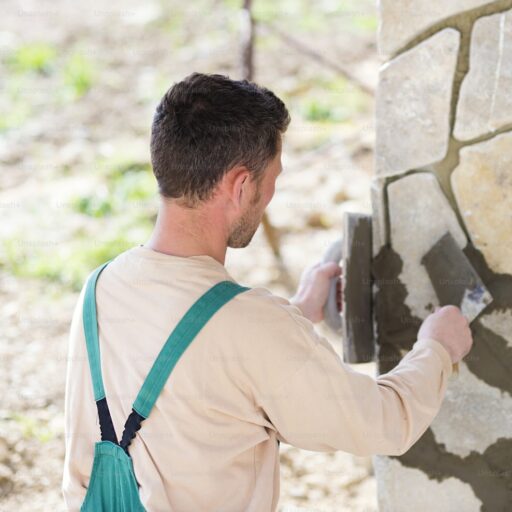Thinking about upgrading your patio, walkway, or outdoor space? Choosing between sandstone pavers vs concrete pavers can be tricky. They’re both super popular — but for different reasons. Some folks love the natural charm of sandstone, while others lean toward the modern edge of concrete. So, which one’s the real MVP? Let’s break it down, shall we?
What Are Sandstone Pavers?
Natural Beauty and Texture
Sandstone pavers are made from—you guessed it—natural stone. That means no two pieces are ever the same. They’re like nature’s version of a fingerprint—unique, textured, and absolutely stunning.
If you’re aiming for a backyard that blends into nature or gives off earthy vibes, natural materials like sandstone are your go-to. They scream rustic elegance and offer a timeless appeal that doesn’t go out of style.

Where They’re Commonly Used
You’ll often see sandstone pavers in gardens, patios, and around pools because of their slip-resistant texture. They’re also great for steps and retaining walls when combined with other materials like boulders and steps.
What Are Concrete Pavers?
Manufactured Versatility
Concrete pavers are man-made using a mix of cement, sand, gravel, and pigment. The cool part? They can be shaped, colored, and textured however you want. So, if you’re aiming for a sleek, modern design or even mimicking the look of natural stone, concrete’s got you covered.
Common Applications
Concrete pavers are the darling of affordable landscaping projects. You’ll find them in driveways, walkways, patios, and even commercial spaces. Because they’re uniform, they’re easier to install and maintain.
Pros of Sandstone Pavers
1. Timeless Natural Look
This is what sandstone is known for. Its organic color variations and textures make it a visual treat. It’s a hit in patio ideas galleries for a reason.
2. Slip-Resistant Surface
Even when wet, sandstone offers a grippy texture that helps prevent slips and falls. That’s why it’s perfect for pools and walkways.
3. Eco-Friendly Material
Sandstone is a sustainable choice. It requires minimal processing, making it more environmentally friendly than some synthetic alternatives.
4. Cooler Underfoot in Hot Weather
Unlike concrete, sandstone doesn’t absorb heat like a sponge. Your feet will thank you on hot summer days.
Cons of Sandstone Pavers
5. Higher Cost
Yep, natural beauty comes at a price. Sandstone tends to cost more upfront than concrete, especially if you opt for premium cuts or slabs like natural stone slabs.
6. Maintenance Requirements
Sandstone is porous. That means it can stain or attract moss if you don’t seal it regularly. It’s beautiful—but needy.
7. Prone to Chipping
Even though it’s a strong stone, sandstone can chip at the edges, especially in high-traffic areas.
Pros of Concrete Pavers
8. Cost-Effective Option
If you’re building a new patio and trying to stick to a budget, concrete is hands-down one of the best budget pavers.
9. Custom Shapes and Colors
Want pavers shaped like puzzle pieces or colored to match your home exterior? Concrete makes it possible.
10. Easy Installation
Because concrete pavers are uniform in size and shape, installation is generally quicker and cheaper than sandstone.
Cons of Concrete Pavers
11. Color Fading Over Time
Concrete tends to lose its pigment over time, especially under strong sunlight. Unlike sandstone, which ages gracefully, concrete can look dull after a few years.
12. Can Crack Under Pressure
Heavy vehicles or freezing temps can cause concrete to crack. And once one cracks, it tends to spread.
Comparing Durability and Longevity
Sandstone may chip, but it doesn’t crack like concrete. When sealed and maintained, it can last decades. Concrete, on the other hand, is strong but may show wear sooner if not properly installed.
Comparing Maintenance and Care
Sandstone needs sealing and cleaning to maintain its look. Concrete needs less maintenance, but stains and cracks are harder to fix. If you’re considering flagstone care, sandstone demands more love.
Which One Is Better for Budget Pavers Projects?
Concrete wins the budget-friendly race. But sandstone can be a smart long-term investment if you’re going for durability, eco-friendliness, and curb appeal. Both have value depending on your goals.
Design Aesthetics and Customization
If customization is key, concrete is more flexible. But if you’re after stone patio ideas that feel high-end and organic, sandstone is unmatched.
Environmental Impact and Sustainability
Sandstone is the more eco-conscious choice, especially if it’s locally sourced. Concrete has a bigger carbon footprint due to its manufacturing process.
Final Verdict: Choosing Between Sandstone vs Concrete
Still unsure? Here’s the TL;DR:
- Choose sandstone if you want natural beauty, eco-friendliness, and have time for maintenance.
- Choose concrete if you’re on a budget and want flexible design options with minimal upkeep.
Also, don’t forget to explore other natural solutions like sandstone veneers, wall stone retaining walls, and complementary products for your outdoor build.
Conclusion
Both sandstone and concrete pavers have their moment in the sun (literally and figuratively). The best choice depends on your budget, design goals, and how much maintenance you’re okay with. Whatever you choose, both options can seriously level up your outdoor vibe.
Check out Southern Stoneworks LLC for premium pavers, expert guidance, and landscaping inspiration!
FAQs
1. Are sandstone pavers more expensive than concrete?
Yes, typically sandstone costs more due to its natural sourcing and durability.
2. Which lasts longer: sandstone or concrete?
With proper maintenance, sandstone can outlast concrete, which is more prone to cracking.
3. Can concrete pavers look like stone?
Absolutely! Concrete can be molded and colored to mimic natural stone quite convincingly.
4. Is sandstone slippery when wet?
Nope! It actually offers great grip, making it safe for pools and wet areas.
5. Which paver is better for colder climates?
Concrete might crack in freezing conditions. Sandstone handles temperature changes better.
6. Can I mix both types in one project?
Sure! Some designers mix sandstone slabs and concrete accents for style and budget balance.
7. Where can I find more paver design inspiration?
Start with Southern Stoneworks’ blog for pro-level tips and inspiration.

